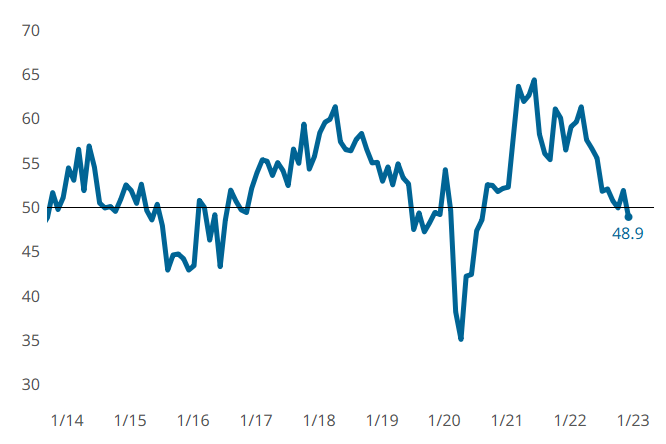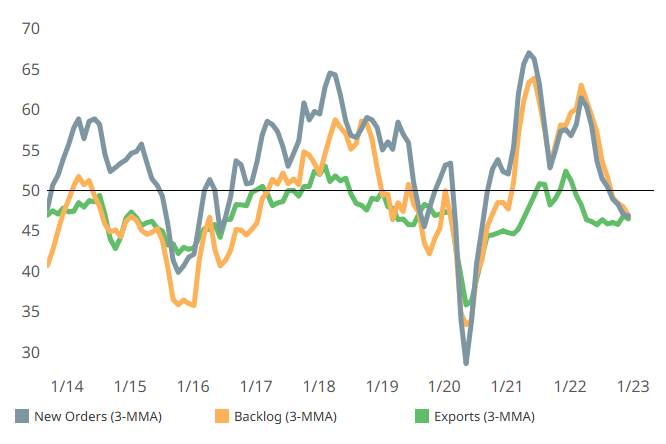Demand components lead to composites GBI contraction
For the first time in two years, the Composites Fabricating Index has contracted, though components continue to shift between expanding and contracting activity.

All good things… (must come to an end). GBI: Composites Fabricating activity contracted for the first time in two years in December. Photo Credit, all images: Gardner Intelligence
The GBI: Composites Fabricating was down three points in December, closing the month out at 48.9. This contracting activity, or slowed growth, follows a more positive reading of 51.9 reported in November. According to Gardner Intelligence, the last time Index activity contracted below “50” was August 2020, though October 2022 activity came close.
Unlike many of the other manufacturing segments, the composites Index has been holding out on contracting activity for some time, continuing to expand while others have contracted. Three components representing demand — specifically, backlog, exports and new orders — contracted at faster rates in December compared to previous months. Production activity, on the other hand, expanded, which poses a bit of a puzzle since production is related to demand components. Similarly, employment activity continued to expand despite known workforce challenges and recession fears. Supplier deliveries continued on its slower expansion journey to a more “normal” state following highs inflated by supply chain issues.

Slowed demand. New orders, backlog and export activity contracted at faster rates in December compared to previous months.
Related Content
-
Composites industry gained back some ground in December
The GBI: Composites Fabricating contracted a little more slowly in December, landing between August and September 2023 values.
-
Composites market shows signs of stabilizing as future outlook brightens
Improving supplier deliveries and strong future business index point to opportunities ahead.
-
Composites GBI lost a little ground in June
The GBI: Composites has contracted since April, just barely remaining within a two-point range of 50.








.jpg;maxWidth=300;quality=90)



